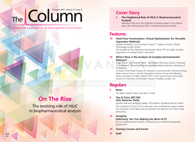Ram Sasisekharan Awarded 2017 Agilent Thought Leader Award
Ram Sasisekharan has received the 2017 Agilent Thought Leader Award in recognition of his contributions in the field of biologics characterization.
Photo Credit: Toria/Shutterstock.com

Ram Sasisekharan has received the 2017 Agilent Thought Leader Award in recognition of his contributions in the field of biologics characterization.
A professor of biological engineering at the Massachusetts Institute of Technology (MIT) since 1996, Sasisekharan and his team are currently developing a radically different approach to shorten the development time between product “design” to the clinic. The proposed approach represents a new paradigm, characterizing and optimizing both the product and the process in a highly rich, parallel, and multilayered fashion.
“I am gratified by this honour and pleased that Agilent has stepped up to support our ongoing work in the area of biopharmaceutical characterization and development,” said Sasisekharan, Alfred H. Caspary Professor of Biological Engineering & Health Sciences and Technology, in the Department of Bioengineering at the Koch Institute for Cancer Research at MIT.
The Sasisekharan team will use the award support to focus on the advancement of analytical techniques for monoclonal antibodies (mAbs) characterization to explore the utilization of critical quality attribute measurements, earlier in the clone selection and drug development process, as a strategy to bring biologics to market faster.
“We are very excited to be working with Dr. Sasisekharan and the entire team at MIT on these innovative methods and approaches. Fundamentally improving the biopharmaceutical development process and timelines will ultimately result in more effective therapies being available sooner,” said Todd Christian, general manager of Agilent’s Cell Analysis Division, and executive sponsor of the award.
The Agilent Thought Leader Award promotes fundamental scientific advances by contributing financial support, products, and expertise to the research of influential thought leaders in the life sciences, diagnostics, and applied chemical markets. Information about previous award recipients is available on the Agilent Thought Leader Award webpage: http://www.agilent.com/univ_relation/TLP/index.shtml

Regulatory Deadlines and Supply Chain Challenges Take Center Stage in Nitrosamine Discussion
April 10th 2025During an LCGC International peer exchange, Aloka Srinivasan, Mayank Bhanti, and Amber Burch discussed the regulatory deadlines and supply chain challenges that come with nitrosamine analysis.












